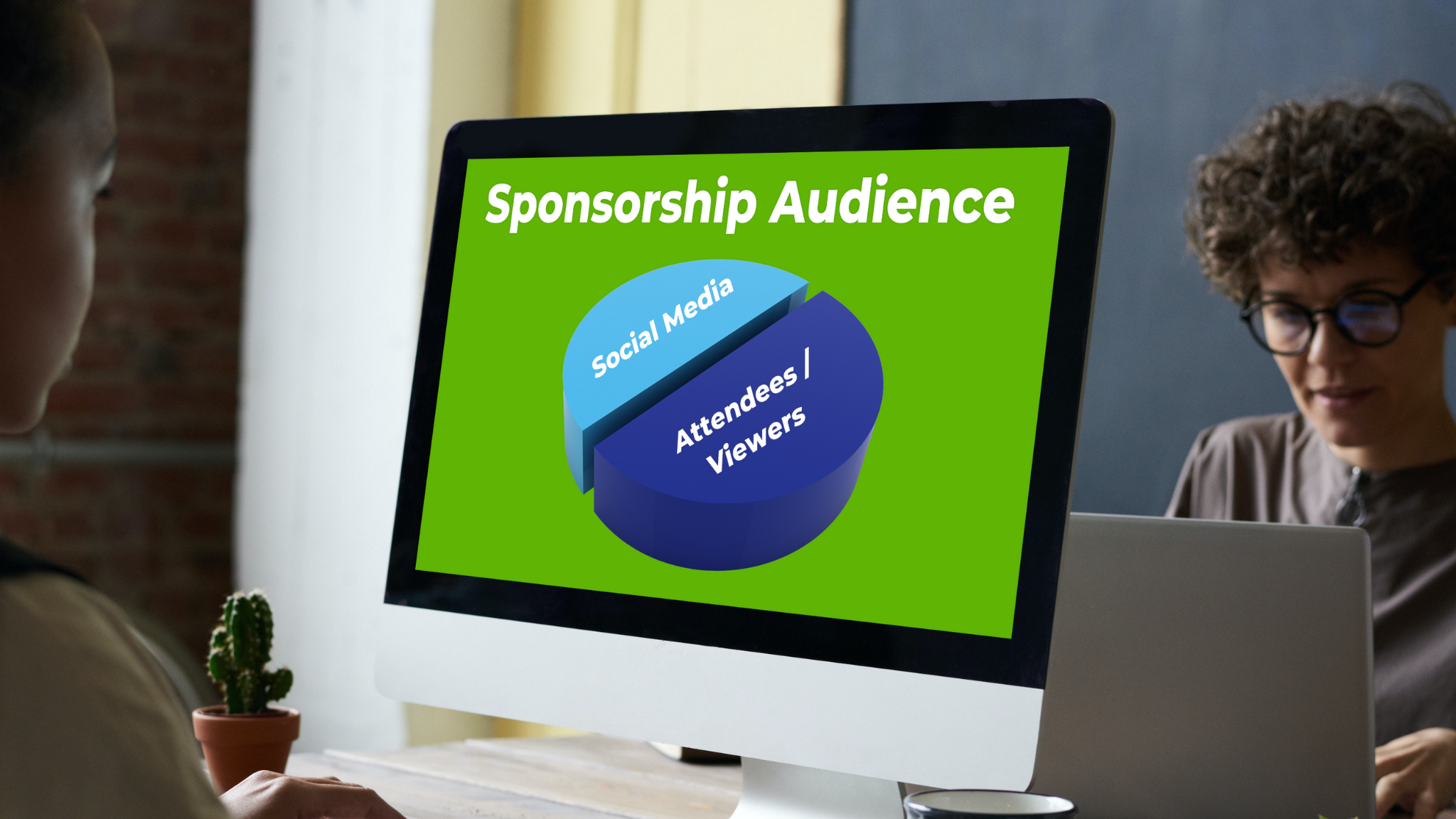
KNOWING YOUR SPONSORSHIP AUDIENCE IS KEY TO SUCCESS IN SPONSORSHIP SALES
The Importance of Your Sponsorship Audience
Ask a real estate broker to identify the three most important factors in real estate: “location, location, location.” The three essential elements for the sponsorship seeker are “audience, audience, audience.” In short, just as real estate brokers understand the importance of location, sponsorship seekers know that audience is the key to sponsorship sales success.
You Need Sponsorship Audience Descriptions So Sponsors Can See The Fit
Accurate and detailed audience descriptions play a crucial role in selling sponsorships. When the property and brand share a common target audience (“shared target audience”), the likelihood of the audience finding the sponsor’s marketing message relevant and engaging increases significantly.
What is Sponsorship Fit?
A sponsorship fits when there is alignment between the sponsor’s values, goals, target audience, and the sponsored entity. For example, you will not find Baby Boomer brands at EDM music festivals because the shared target audience is small or non-existent. A Gen Z brand? All day long. A shared target audience reflects a “fit’ between the partners.
How Does A Sponsorship Property Define Its Audience?
To achieve sponsorship success for properties, start by understanding your audience. We recommend breaking down this issue into two parts: the property’s audience and the sponsor’s target customers, and advise our clients to do the same.
Sponsorship Property Audience Data That You Need To Know
Prospective sponsors want to understand everything about a property’s audience:
- Sponsorship Audience Demographics
- Sponsorship Audience Psychographics
- Sponsorship Audience Consumption Habits
- Sponsorship Audience Life Events
Frankly, audience definitions can include any other non-confidential data that makes a property’s audience interesting to a sponsor. Let’s break down the key components in detail.
Sponsorship Audience Demographics
Demographics refers to the characteristics of a specific group of people, such as their age, gender, ethnicity, education, income, and other qualities. It helps us understand the makeup of an audience and how different groups are distributed within it. By studying audience demographics, we can gain insights into patterns, trends, and differences among people, which can help make decisions in various areas like sales and marketing.
Sponsorship Audience Psychographics
Psychographics are the characteristics that define and categorize an audience, such as attitudes, values, hobbies, lifestyle choices, and behaviors. Marketers analyze psychographics to gain insights into their target audience’s motivations and preferences, which helps them create more effective strategies that connect with customers on an emotional level.
Learn more in our article “SPONSORSHIP AUDIENCE PSYCHOGRAPHICS ARE BETTER THAN DEMOGRAPHICS.”
Sponsorship Audience Consumption Habits
Marketers need to know how people buy things. When they understand the buying habits of customers, they can make better plans to sell products. They can show things in ways that make sense to people and make them want to buy. Also, when marketers know what customers usually buy, they can guess what might be popular in the future and change their products or ads. Presenting a prospective sponsor with this type of data can increase the perceived value of the audience, making them more appealing to the sponsor looking to sell their products.
Sponsorship Audience Life Events
Marketers must understand customer life events due to their profound influence on purchasing behaviors. These events, such as weddings, graduations, or moving to a new home, can trigger substantial shifts in a person’s needs and priorities. When marketers understand these events, they can tailor their strategies to meet customers’ evolving requirements. For instance, a family preparing for a newborn might prioritize baby-related products. In essence, understanding customer life events enables marketers to be sellers and partners who provide relevant and timely support during pivotal moments in customers’ lives.
Understanding the life events of a property’s audience provides valuable insights to sponsors on effectively marketing their products or services and ultimately increases the potential sponsorship value.
Why You Need To Know About The Sponsor’s Target Audience
Except for foods like fruits and vegetables, few products are all things to all people. Most companies selling goods and services have a well-defined sense of their target market. For example, one company selling energy bars describes its customers this way: Socially conscious people between the ages of 22 and 45, with a household income of + $150,000, a college degree, and most have never been married. This sponsor company knows its target customer.
In sponsorship, the tighter the target match between sponsor and property, the more successful the relationship. Marketing messages resonate, enhance brand images, and sell sponsor products.
Too often, we see property sponsorship presentations with no audience description at all. Yikes! Without data descriptions, these properties cannot demonstrate a shared target audience with the energy bar company.
A few years ago, we met with an esports team that described its audience as players of a specific video game, ranging in age from 12 to 64, with over 50 million people playing the game in over 190 countries. It would not be wise for an energy bar company to partner with this team, as the energy bar customer base represents only a small portion of the vast and varied audience that the esports team attracts. Few sponsors cater to such a diverse age range, making it challenging to target a specific demographic.
How To Do Sponsorship Audience Research
For most properties looking for sponsorship success, the pathway to audience identification starts with research. The most direct way is by surveying your audience. You can also identify or supplement details about your audience through some free 3rd party resources.
Conduct A Sponsorship Audience Survey
Surveys can be fielded by sponsorship agencies, market research firms, university groups, or by the property itself. Do-it-yourself surveys have never been easier to field, although there is art and science behind the questions. Platforms like Survey Monkey have sample survey templates to help start a proper audience survey. Furthermore, with a current email marketing list, the property would be well on its way to full audience awareness.
Free Resources To Identify Details About Your Sponsorship Audience
We wrote an article called “SPONSORSHIP AUDIENCE RESEARCH – PAID AND FREE SOURCES” because a property can never know too much about its audience. We also understand that limited funds can affect the ability to do market research. Having access to free data that can help property owners and sponsors gain a better understanding of their audience can prove advantageous. Google Analytics and other comparable resources are reliable sources of information since sponsors also rely on and have confidence in them.
When To Share Sponsorship Audience Data
Sharing audience data is crucial in the sponsorship process. Therefore, sponsorship seekers should provide this information in their initial communication with potential sponsors, such as an email, DM or the sponsorship deck. This confirms to the prospect that their target customers can be reached through the property’s audience. The data also highlights how the property’s sponsorship could serve as a valuable marketing tool for the sponsor.


